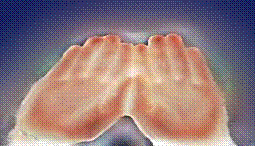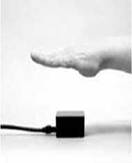





Published on Nov 30, 2023
An individual first rests his wrist, and on some devices, the middle of his fingers, on the sensor's supports such that the palm is held centimeters above the device's scanner, which flashes a near-infrared ray on the palm. Unlike the skin, through which near-infrared light passes, deoxygenated hemoglobin in the blood flowing through the veins absorbs near-infrared rays, illuminating the hemoglobin, causing it to be visible to the scanner.
Arteries and capillaries, whose blood contains oxygenated hemoglobin, which does not absorb near-infrared light, are invisible to the sensor. The still image captured by the camera, which photographs in the near-infrared range, appears as a black network, reflecting the palm's vein pattern against the lighter background of the palm.
An individual's palm vein image is converted by algorithms into data points, which is then compressed, encrypted, and stored by the software and registered along with the other details in his profile as a reference for future comparison. Then, each time a person logs in attempting to gain access by a palm scan to a particular bank account or secured entryway, etc., the newly captured image is likewise processed and compared to the registered one or to the bank of stored files for verification, all in a period of seconds. Numbers and positions of veins and their crossing points are all compared and, depending on verification, the person is either granted or denied access.
The completely contactless feature of this Device makes it suitable for use where high levels of hygiene are required It also eliminates any hesitation people might have about coming into contact with something that other people have already touched.
In addition to being contactless and thereby hygienic and user-friendly in that the user does not need to physically touch a surface and is free of such hygiene concerns, palm vein authentication is highly secure in that the veins are internal to the body and carry a wealth of information, thereby being extremely difficult to forge.
There may be a chance that the palm we had registered may get damaged then we cannot use this technology, so during the time of registration we take the veins of both the hands so that if one gets damaged we can access through the second hand. When hand get damaged up to large extent we can get veins because deeper into the hand veins are obtained. When we apply this method we can maintain complete privacy .

On the basis of testing the technology on more than 70,000 individuals , Fujitsu declared that the new system had a false rejection rate of 0.01% (i.e., only one out of 10,000 scans were incorrect denials for access), and a false acceptance rate of less than 0.00008% (i.e., incorrect approval for access in one in over a million scans). Also, if your profile is registered with your right hand, don't log in with your left - the patterns of an individual's two hands differ. And if you registered your profile as a child , it'll still be recognized as you grow, as an individual's patterns of veins are established in utero (before birth). No two people in the world share a palm vein pattern - even those of identical twins differ . In addition the devices ability to perform personal authentication was verified using the following:
1. Data from people ranging from 6 to 85 years old including people in various occupations in accordance with the demographics realized by the Statistics Center of the Statistics Bureau.
2. Data about foreigners living in Japan in accordance with the world demographics released by the united nations.
3. Data taken in various situations in daily life including gafter drinking alcohol, taking a bath, going outside and waking up.
The completely contactless feature of this Device makes it suitable for use where high levels of hygiene are required .It also eliminates any hesitation people might have about coming into contact with something that other people have already touched.

Fig:2.6 Contact less sensor
In addition to being contactless and thereby hygienic and user-friendly in that the user does not need to physically touch a surface and is free of such hygiene concerns, palm vein authentication is highly secure in that the veins are internal to the body and carry a wealth of information, thereby being extremely difficult to forge.
This palm vein authentication technology is used in various areas for more security. The following are some of the important areas where it is used:
In July 2004, to ensure customer security, Suruga bank launched its“Bio Security Deposit” the world’s first financial service to use Palm Secure . This service features high security for customers using vein authentication , does not require a bank card or pass book and prevents withdrawals from branches other than the registered branch and ATMs thereby minimizing the risk of fraudulent withdrawals. To open a Bio-Security Deposit account, customers go to a bank and have their palm veins photographed at the counter in order to guarantee secure data management, the palm vein data is stored only on the vein data base server at the branch office where the account is opened..
In personal computers palm vein technology can applied by inserting the vein sensor inside mouse. when power is supplied to system the mouse also gets power and the sensor in the mouse will be ready to sense palm veins. When one place his/her palm the sensor sense the veins and if they are matched with the registered ones the system allows the person to use it.
A public library in Japan is set to become the first in the world to use palm-vein biometrics as a substitute for conventional library cards. The University of Tokyo hospital Using Sensor has taken delivery of a contactless palm vein authentication system to secure physical access to its Department of Planning, Information and Management.
In front of our homes we can apply this Palm vein technology so that by registering the veins of our family members and relatives we can maintain high range security which is not possible through other technologies. Japanese recently used these technologies before front doors and getting high range security.
| Are you interested in this topic.Then mail to us immediately to get the full report.
email :- contactv2@gmail.com |